#plasticfree
Text
Mini Ecosystem Algae Producing Omega 3 Proteins Oxygen No Water Change Aquaponics
🌿 Welcome to our educational and intriguing video exploring a mini ecosystem in aquaponics, where algae play a pivotal role in sustaining life. Titled "Mini Ecosystem: Algae Producing Omega-3 Proteins & Oxygen - No Water Change Aquaponics", this video showcases a self-contained aquatic environment thriving with goldfish, guppies, and nutrient-rich algae.
🐠 See the Symbiotic Relationship in Action:
Dive into the world of aquaponics where goldfish and guppies coexist in a mutual relationship with algae. Observe how these fish contribute to the ecosystem, while feeding on the algae, which in turn produce vital omega-3 proteins and oxygen.
🌱 Algae: The Heart of the System:
Algae isn't just a food source; it's the backbone of this mini ecosystem. Rich in omega-3s and proteins, algae support the health and growth of the fish, while their photosynthetic process generates oxygen and helps in purifying water.
💧 Innovative No Water Change System:
This video highlights the efficiency of the aquaponics system, where the need for water changes is eliminated. The natural filtration process created by the algae and the fish's symbiotic relationship ensures a stable and clean environment.
🐟 Goldfish and Guppies: Perfect Aquaponics Companions:
Goldfish and guppies are more than just pretty faces in this setup. They play a crucial role in maintaining the ecosystem's balance, and their interactions with algae make for a fascinating watch.
🔬 Educational Insight:
Whether you're an aquaponics enthusiast or a student of sustainable ecosystems, this video offers a wealth of information about the practical applications of aquaponics systems, the benefits of algae in aquatic environments, and the nutritional advantages of integrating such systems.
📹 Join Our Community:
Subscribe to our channel for more insightful content on aquaponics and sustainable living. Share your thoughts and experiences in the comment section, and join our community of eco-conscious individuals!
#sustainability#environment#plasticfree#viral#trash#sustainable#food waste#wastefree#water#aquaponics#aquarium#aquatic#fish tank#fish#fishes
17 notes
·
View notes
Text
ARE YOU TIRED of using CHEAP washcloths, dishcloths, and sponges that don't absorb water and create a nice lather? LOOK NO FURTHER! These 100% COTTON washcloths and dishcloths are HANDMADE by me and will do the job! You can find them on my website at https://www.rootsandwingboutiquehandmade.com
.
SALE of the blue set on Etsy for $34.20!
https://www.rootswingsboutique.etsy.com
#crochetersofinstagram#etsy#craft#crochet#makersgonnamake#handmade#menieresdisease#shop#handmadewithlove#yarn#ecofriendly#ecofashion#environment#enviromental#say no to plastic#cotton#dishcloth#washcloth#washcloths#interior design#farmhouse#reuse#sustainability#sustainable#zero waste#vegan#gogreen#plasticfree
2 notes
·
View notes
Text
DUNE mini Ornithopter Papertoys
Netoids PoidKarts DUNE papertoys! Includes Dr Keynes and Duke Leto with their own CHIBI MINI Ornithopters!
PDF at https://www.netroids.net/poids/poidkarts
Makes a great gift!
#papercraft#free pdf#fan art#dune2021#dune 2021#dune#ornithopter#papertoy#netroids#papertoys#printable#fanart#plasticfree#plasticfree2023#gift ideas#giftidea#christmas gift
6 notes
·
View notes
Text
#sustainability#sustainable#ecofriendly#sustainableliving#environment#zerowaste#sustainablefashion#climatechange#nature#gogreen#recycle#savetheplanet#plasticfree#eco#reuse#design#green#organic#fashion#handmade#vegan#architecture#innovation#slowfashion#renewableenergy#earth#climateaction#recycling
3 notes
·
View notes
Text

Nature Plus Product Lunch Box
#ecofriendly#zerowaste#sustainable#sustainability#eco#sustainableliving#handmade#plasticfree#gogreen#branding#marketing#graphicdesign#design#logo#digitalmarketing#brand#business#food#foodporn#foodie#instafood#foodphotography#foodstagram#yummy#foodblogger#foodlover
3 notes
·
View notes
Text
Another liar trying to make Canadians believe the stupidity of the Canadian government. 💩💩💩
Un autre menteur qui essaie de faire croire au Canadiens la bêtise du gouvernement Canadien. 💩💩💩
#climatechange#environment#sustainability#nature#globalwarming#savetheplanet#climate#climatecrisis#ecofriendly#climateaction#zerowaste#sustainable#earth#gogreen#climatechangeisreal#plasticfree#green#sustainableliving#climateemergency#recycle#eco#pollution#climatejustice#climatestrike#renewableenergy#water#changementclimatique#environnement#durabilité#réchauffementplanétaire
3 notes
·
View notes
Text

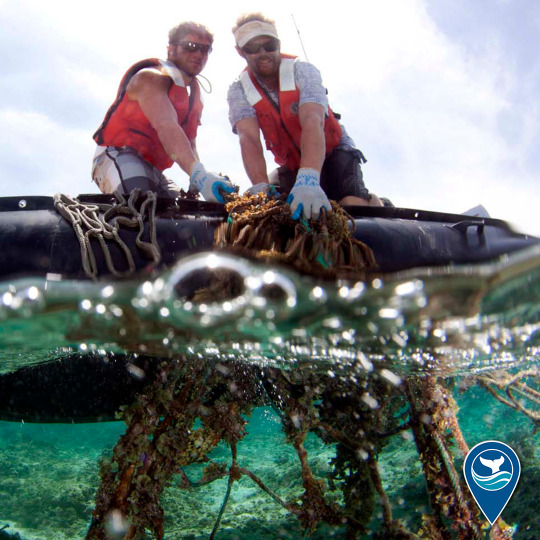
Today is the International Coastal Cleanup!
Find marine debris projects in your region:
Whether you’re participating in an organized cleanup event today or not, head out to your favorite beach today and do what you can to fight marine debris.
Not near a beach? You can still help keep our ocean clean by keeping your local streams and rivers clear of trash, using reusable shopping bags and drink containers, opting not to use plastic straws if you don’t need them, and spreading the word about the importance of maintaining a clean and healthy ocean.
#InternationalCoastalCleanup#MarineDebris#PlasticPollution#PlasticOcean#PlasticFree#EarthIsBlue#NOAA#ocean#science#nature#national marine sanctuary#conservation#plastic#pollution
27 notes
·
View notes
Text


Being an eco-friendly small pet owner 🐭
In April, Tom and I finally got our first pets together - two little mice! Having grown up with hamsters, I was painfully aware of how plastic-heavy small animals are. Their food, treats and bedding are all stored in plastic bags and their cages and toys are often ladened with plastic.
We were desperate to have life other than houseplants to look after, and we had fallen in love with the idea of getting mice. We were also desperate to not break the planet by getting them, however.
So! Here I am to share with you how our eco-friendly mice were brought about. A lot of this can be applied to rats, hamsters and gerbils etc. but bear in mind the specific care points are mouse-centric.
Before going into any details, I just want to disclaim that I was crushing on these mice hard, months before they were even born. I budgeted for them three months ahead and chipped away at buying their things over the course of those three months.
My mentality is to buy secondhand if I can, and if I can't then to buy high quality (and often therefore a bit pricey). This is manageable for me, but only because I'm an organisation gremlin and plan my budgets to the extreme.
🏠Starting with the cage:

This cage is the Ferplast Cage for Hamsters and Mice KARAT 60. The key thing here for me was that it's made of glass and metal, with minimal plastic - only the clips and wheel are made of plastic. Unfortunately for mice, they need a solid wheel which means we couldn't get a metal one. For mice, they need good ventilation as they're prone to respiratory diseases. They also need a deep base to the cage so they can exhibit their natural digging behaviour. The bar spacing of this cage is mice appropriate (0.6 mm or less) as mice are small! They can squeeze between the bars of some hamster cages.
Food bowls! Made of ceramic, one for grains, one for fruit and veg. Shallow enough that they can perch on them (often in them) to nom.
Wooden house and log. Instead of a plastic house, you can get lovely wooden ones that double up as good chewing posts for them as they get older. Plastic isn't the best thing for them to get their teeth onto.
You can't really see it in this photo, but the water bottle I have for them is made of glass instead of plastic. Always check the labels at the shop to make sure anything you're buying is suitable for the critter you're getting!
Edit: It's been brought to my attention that the scale of this cage isn't necessarily obvious from the photo! In terms of gallons, the glass tank is around 12 gallons and the cage area is a further 17 gallons, bringing the total volume of the whole area up to about 29 gallons (these are from my measurements, from the measurements on the product page, it comes out more around 27 gallons. Mine were a bit rough so maybe trust this number more!). For our two mice, this is an appropriate amount of space.
🛏️Now onto bedding:
Mice need materials they can burrow into, but also need a substrate at the very base of the cage to absorb their urine. If you're going a plastic route, this normally involves cat litter at the base and a mix of paper shredding and tissue shredding (if you get sawdust/wood chip, you have to be very careful with what wood it is from, as some trees irritate their respiratory systems)
My plastic-free suggestion depends on you already getting your loo roll and kitchen roll from a plastic-free company (like Bumboo or Who Gives a Crap).
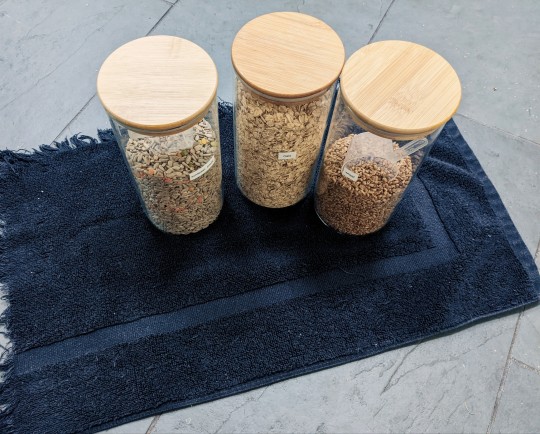
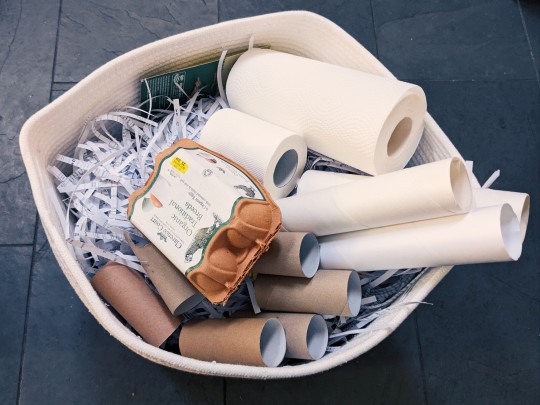
Substrate: As you can see here, the substrate we use is a (slightly mangled from the washing machine) bath mat. It's 100% cotton and every fortnight when we clean them out, we shake it out in the garden and pop it in the washing machine. We have two that we cycle between so the girls never go without. Be careful with what material you buy - 100% cotton is fine, but if it's a blend with a synthetic fibre it should be avoided.
Burrowing materials: Why on earth would you buy paper and tissue pre-shredded in a big plastic bag when you could just...shred paper...and tissue...at home? I got myself a cheap shredder and have one of the technicians at work hoarding scrap paper for me that would otherwise go in the recycling bin, so I'm re-using stuff that would get junked. After its use here, it can then go in our home recycling as our council accepts shredding in mainstream recycling. Whenever we clean the girls out, we add in some loo roll and kitchen roll that we tear up into strips by hand. We never use up all of our loo roll and kitchen roll from each Bumboo order anyway, so it doesn't cost us any more than our standard subscription already. Plus, two mice really don't use up much!
Extra bits: Nutmeg and Honeysuckle are very happy burrowing, running in their wheel and Spidermanning it around the cage bars and the ceiling, but we do provide them with tubes to tunnel through and some DIY structures we've made for them to play with. These are just from our usual waste of loo roll and kitchen roll.
🍴Lastly, on to food:
Now, we love the girls and hope they life a very happy 2-years-life-expectancy, but mouse food from pet stores is honestly a rip-off. Looking at the ingredients and talking to the staff there, there was nothing we couldn't get from our local refill store and farmer's market.

The girls get sunflower seeds, oats and wheat in their grains bowl and a selection of seasonal fruit and veg in their other bowl. Every now and then they get treats of popcorn (plain), different seeds and nuts (not walnuts which are toxic) and even some suet and seed block from what I buy for the garden birds. Nutritionally, this is what they get from the mouse food in the store - the ingredients list is identical to what we give them, the store stuff is just all dehydrated instead.
They are very happy. Almost too much. One of them is weighing in at a whopping 27 g. We're trying our best, moving on...
My point being that it's easy to avoid the plastic if you have a good refill store near you. Ours is priced competitively to the local supermarkets, so this isn't actually an expensive venture at all. But if you're living somewhere like London and have a refill store near you, I know this price comparison is a distant fantasy with a lot of them. On the positive side, the sunflower seed and wheat jars in the photo above haven't been refilled since I filled them first three months ago. They really don't each much! (Apart from Honeysuckle. Twenty-seven grams).
Apart from some balls for them to run around in, and a little carry case for transport, these mice use absolutely zero plastic, a far cry from the plastic-hungry hamster care from my childhood.
In conclusion:
It takes:
planning
budgeting
sourcing of resources
certain habits to already be instilled
but it is possible.
Just because they're little and often seen as the "easy" pets, doesn't mean they shouldn't get just as much love and planning as you would put into getting a cat or dog. Owning any animal is a responsibility one should take seriously and I feel that rodents and fish get overlooked deeply (did you know that a goldfish on average should have a 20 gallon tank?).
Here's to giving all animals a good quality of life! 🐭
#goinggreenish#ecofriendly#microplastics#microfibres#environment#goinggreen#plasticfree#ecotips#sustainablelifestyle#sustainableliving#plasticfreeproducts#greenshopping#lifestyle#eco tips#eco friendly#green lifestyle#green shopping#plastic free products#sustainability#pets#pet supplies#little pets#mice#pet mice#pet mouse#eco pets#eco pet#eco friendly pet#plastic free pets#pet care
29 notes
·
View notes
Text
Climate Change Health Risks: Exploring Altered Climates
The global phenomenon of climate change is not only reshaping the planet’s physical landscapes but also significantly impacting human health. As weather patterns shift, temperatures rise, and extreme events become more frequent, the intricate interplay between the environment and our well-being becomes increasingly evident. In this article, we delve into the health risks posed by altered climates…

View On WordPress
#CLIMATE#climateaction#climatechange#climatechangeisreal#climatecrisis#climateemergency#climatejustice#climatestrike#covid#earth#eco#ecofriendly#environment#fridaysforfuture#globalwarming#gogreen#green#NATURE#photography#plasticfree#pollution#recycle#renewableenergy#savetheplanet#SUSTAINABILITY#sustainable#sustainableliving#vegan#water#zerowaste
2 notes
·
View notes
Text

Aquaponics Explained + Cost Analysis DIY Automated Home System
Are you searching for a sustainable way to replace overfishing and fish farms? Aquaponics can be the solution to polluted supermarket fish! It's a sustainable, eco-friendly approach for producing healthy food at home without hurting the environment. In this article, you'll find out what aquaponics is and how it works.
What is Aquaponics?
Aquaponics Fundamentals
Aquaponics is a sustainable and innovative way to cultivate fish and plants together. Fish waste provides nutrients for the plants, and the plants filter the water for the fish. This means no more traditional soil-based farming!
Basic of Aquaponics
Aquaponics consists of a few key elements: Fish Tank, Grow Bed, and Bacteria. Here's a breakdown:

3 Basics of Aquaponics: Fish Tank, Bacteria, and Grow Bed Explained
Unique Aquaponics Details
Aquaponics is great for the environment. It requires minimal water and can be done indoors or outdoors. It also creates a highly effective and productive system due to the symbiotic relationship between fish and plants.
Call-to-action
Learn how aquaponics can revolutionize food production while saving natural resources. Get involved in this revolutionary technique today and help reduce our global reliance on overfishing and conventional fish farms. Don't miss out on this chance to make a positive impact on the planet's future.
Overfishing - Global Crisis caused by Trawlers?
Overfishing is a global crisis caused by trawlers and it's causing serious damage. As most fishing companies only care about how much fish they can pull out, the consequences of their actions are overlooked. These vessels are depleting marine resources, disrupting ecosystems, compromising biodiversity, destroying ocean ground and undermining food security for fishing communities. Plus, they're pushing commercially valuable species to the brink of extinction. Trawling techniques also create massive amounts of bycatch, including juvenile fish and species crucial to the balance of the environment. This unsustainable approach jeopardizes fishermen's livelihoods.
An estimated 1 trillion fish are caught from the wild yearly and about 100 billion gets dumped back.
Aquaponics offers a solution. It's a combination of aquaculture (cultivating fish) and hydroponics (growing plants without soil). This closed-loop system uses less water and increases food production efficiency.
In Singapore, the Sky Greens Farms has put this system into practice. By farming fish and growing plants in the same space, they are reducing reliance on conventional agriculture and minimizing pressure on marine resources. Aquaponics is a great way to find fish friends without threatening the ocean.

African Catfish is a very productive (up to 200 kg per year per 1000 Liter) and delicious-tasting aquaponics fish
Aquaculture Alternative to Ocean Caught Fish?
Aquaculture - Is it a Viable Solution to Overfishing and Fish Farms?
Aquaculture provides an eco-friendly option for getting fish, by using controlled environments to cultivate species. It reduces the environmental damage caused by overfishing and lowers the reliance on fish farms.
Production of Aquaculture and Wildcaught Table:

Production of Salmon and Pangasius per year
The table shows that aquaculture production of pangasius and salmon is almost ten times higher than ocean caught production. This means we can meet the demand for fish without harming the environment.
Aquaculture also prevents some of the potential water pollution and run-offs if good waste handling systems are in place. It also helps in monitoring fish health and controlling diseases.
Pro Tip: Aquaponics is a combination of fish farming and hydroponics, where the waste from fish provides nutrients for plants, and plants filter the water for fishes. Try this innovative approach for effective results.
Harm of Farmed Salmon Compared to Home Made Fish
Fish farmed salmon versus home made fish - what's the difference? Fish farming is often seen as a more sustainable option than wild-caught fish. However, it has several harmful impacts. Let's explore them.
The fish feed for farmed salmon consists of processed pellets with antibiotics, preservatives, other chemicals and wild caught fish. While home made fish feed mostly on natural sources.
Farmed salmon cages can pollute the ocean floor, damaging the surrounding ecosystem. In contrast, home made fish have no impact on the ocean.
Farmed Norwegian Salmon World’s Most Toxic Food
Overcrowded fish farms create ideal conditions for disease. This leads to the use of more antibiotics. Homemade fish have a lower risk of disease spread due to their controlled environment and the sanitizing effect of the plants, worms and the grow bed.
Escaped farmed salmon can negatively affect native fish populations and become an invasive species. They also spread deadly diseases to wild populations. Home made fish pose no risk of disrupting natural ecosystems.
We must consider the harmful effects of fish farming on both the environment and our health. We can make informed choices about our seafood consumption by understanding these impacts.
Make a conscious decision when choosing farmed versus home made fish. Opt for sustainable alternatives that prioritize environmental conservation and personal well-being. Seafood choices you make can have a positive impact. Aquaponics proves that even fish prefer working from home!

Home Aquaponics System with Goldfish
Difference between Home Aquaponics and Fish Farms
Aquaponics is unlike fish farms, allowing decentralization and optimizing waste recycling. There's a comparison table showing the differences between home aquaponics and fish farms: transparency, chemical-free practices, leftover feeding system, and resource burden.

Comparison between Home Aquaponics and Fish Farms
Plus, home aquaponics systems don't need wild fish for breeding. Individuals can grow food in a controlled environment and still keep the natural balance of an ecosystem.
For better water quality and to reduce disease outbreaks aquaponics uses biofilter systems. Hydroponics completes the cycle of sustainable farming, proving that soil isn't needed to grow your own food.
Hydroponics Completing the Cycle
Aquaponics revolutionizes agriculture by combining hydroponics and aquaculture - creating a self-sustaining ecosystem. This integration brings improved water efficiency, with studies showing up to 90% less water consumption. Plus, it eliminates synthetic fertilizers - reducing pollution and costs for farmers.
Pro Tip: Aquaponics not only mitigates overfishing, but also enables sustainable food production with fewer impacts on the environment. Common failure? If your fish start doing the backstroke, it's time to check your water quality!
Common Failures and How to Prevent Them
Aquaponics: Achieving Success and Avoiding Common Pitfalls
To guarantee success with an aquaponics setup, you must be aware of and beat common challenges. Six major points to consider are:
Overfeeding: Always start off with feeding very little and adapt the amounts over time. Uneaten feed can rot very fast and pollute the water.
Stopping Pests: Regularly checking the health of plants and keeping it clean will help ward off pests.
Dealing with Diseases: Keeping good water quality, monitoring fish health, and being hygienic minimizes the risk of diseases.
Prevent Overcrowding: Maintaining a balanced fish-to-plant ratio ensures optimal growth and prevents overcrowding, which affects water quality and stresses organisms.
Establishing Stability: Slowly introducing fish and plants into the system enables them to settle in properly, grow steadily and give the bacteria enough time to adapt.
Monitoring Water Parameters: Regularly testing and adjusting temperature, pH levels, dissolved oxygen, and nutrient levels is a great way to ensure a stable environment for both fish and plants but not necessary.
Checking Nutrient Levels: Replenishing essential nutrients maintains the right balance and leads to healthy plant growth with micronutrient mix like rock dust.
Apart from these common pitfalls and their solutions, it's also important to remember that aquaponics systems require careful attention to detail. This means doing regular maintenance tasks like cleaning inlet filters, inspecting pumps, looking over plumbing connections, and maintaining system hygiene.
An example highlighting the significance of managing these aspects involves a small-scale aquaponics lover who initially failed to do regular water parameter testing. This led to uneven nutrient levels and stunted plant growth. By closely monitoring nutrient levels afterward, and tending to the system quickly, they were able to revive their plants and maintain a thriving aquaponics setup.
Plants Not Allowed
Plants you should exclude from aquaponics are either too large like many fruit trees and bushes, don't work with hydroponics like many root crops as they need deep grow beds, or disrupt the balance of the ecosystem. Such plants are called overdominant and unfit.
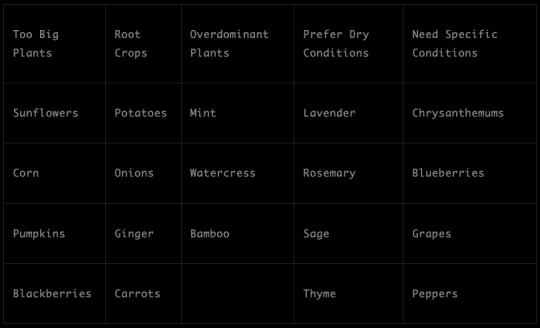
overdominant and unfit plants for aquaponics
Even though those plants usually don’t grow well in an aquaponics system, there are ways to make it work for almost any plants by playing with factors like grow medium, water timing, and nutrition composition for the plants.
Disadvantages of Aquaponics
Aquaponics may require a substantial upfront investment and limit the variety of fish that can be grown. Electricity is also needed for components such as heaters and lighting. Plus, certain crops are seasonal which reduces diversity and availability in certain regions.
In spite of its advantages, aquaponics can be difficult to set up and requires some basic knowledge to maintain. Prospective farmers must assess their resources, skills, and goals to see if it's suitable.
Don't miss out on this! Aquaponics can revolutionize farming while being eco-friendly and self-sustaining. Embrace the future of agriculture at your home now!
Ready to explore the cost of aquaponics? Get your calculator and fish jokes ready - make sustainability profitable!
Cost Analysis of Setting Up Aquaponics
We all love numbers so here you go. Conducting the cost analysis for an aquaponics system is key to understanding the investment necessary for long-term profits. Analyzing the expenses and their ROI allows one to gauge the financial feasibility of this sustainable farming method.
A table below shows the cost analysis of setting up aquaponics:

cost analysis of setting up aquaponics
This detailed breakdown lists the components and associated costs for aquaponics setup. It includes fish tanks, grow beds, plumbing, pumps, lighting, seeds, and fish. The initial investment for these items = $1,610.
Also, operational costs such as feed, electricity, water, maintenance, and labor must be taken into account. These regular expenses help maximize profits and ensure the system works well.
Pro Tip: When calculating aquaponics setup costs, assess the quality of the equipment carefully. High-quality components may cost more initially, but can lead to higher ROI in the long run because of less failure. If you are on a tight budget I would heavily advise you to buy second hand and give old items a new life. Especially fish tanks and fish can be bought for a fraction of the new price, sometimes even for free from places like facebook marketplaces or craigslist.
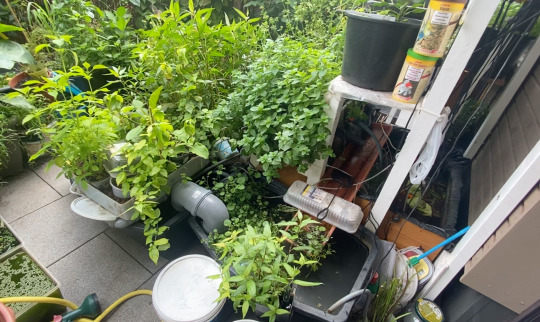
Automated aquaponics system with multiple connected container one month later
Profitability Explained
By analyzing the financials, one can understand the profitability of aquaponics. This sustainable farming system combines aquaculture and hydroponics. Therefore, it uses resources efficiently, reducing costs and maximizing yields for you and the planet.
Investment Costs: $1,610 for initial setup.
Operating Costs: $500 per month for labor and maintenance equals $6000 per year. I have calculated very generously because fish feeders and automated filter beds do almost all the work and the main expense: fish feed can partially be replaced with feeding leftovers, upcycling organic waste with black soldier fly larvae and growing algae for omega 3.
Revenue Generation: $9,000 per year through chemical free produce.
The price you would pay for truly organic fish and plants can’t be measured but lets calculate with regular food prices.
So let's say you have an IBC Tank with 275 Gallon, want to maximize your profit and do everything right.
A german breeder gave me numbers of 200 kg(440 pounds) of catfish per 1000 liters(264 gallon) per year.
440 pounds of catfish = $4400 at a price of $10 per pound
Calculating the plants is a little tricky. Depending on what you grow the amounts of harvest but also the price can vary massively.
For maximum profit growing cannabis can return your investment after the first harvest (but cannabis doesn’t work with catfish).
Herbs grow very well with catfish because the carnivore diet is rich in nitrogen which is great for leaf growth.
Per year you should be able to at least grow 50 pounds of different herbs. For simplicity let's calculate with mint.
0.5 oz of Mint cost $2.99.
0.5 oz = 0.03125 lbs
50 lbs / 0.03125 lbs = 1600 * $2.99 = $4784
Real World Math
Unfortunately the real world doesn’t work like that. Fish keeping and caring for plants is a journey that you and your fish go together hand in hand. As the fish grow and eat more, the bacteria that transform harmful ammonia into safe nitrate, grow with them as well as the plants. Once this complex ecosystem is established and you’ve gained more experience over time you can expect those numbers that I’ve calculated with. Nevertheless you can expect a return on investment in 1 to 2 years.
The closed-loop system reduces environmental impacts, conserves water and eliminates the need for fertilizers or pesticides. It supports local biodiversity and addresses the issue of overfishing.
The FAO conducted a study, which reveals 90% of marine fish stocks are either fully exploited or overexploited. This necessitates alternative solutions, such as aquaponics. Aquaponics is where fish and vegetables learn to coexist, forming a delicious ecosystem and we are part of it.
Benefits of Aquaponics
Aquaponics is an innovative circular system that offers many advantages. It eliminates water waste by using the nutrient-rich water from fish tanks to fertilize plants. This makes it more efficient and sustainable. It can be adapted to individual needs, reducing the need for chemicals, single use plastic and transportation costs. Plus, it allows for local production and year-round cultivation.
There's a success story of a small-scale farmer who established an aquaponic system in their backyard. This enabled them to grow their own food sustainably while generating a surplus to sell locally. Not only did they enjoy fresh produce, mental and physical wellbeing, but they also experienced economic and environmental benefits. Insects and birds started visiting their backyard more frequently. From bees to hummingbirds the sheer amount of variety made exploring nature fun again.
Safe or Not for My Children and Me?
Aquaponics: Secure & Healthy for You & Kids!
Be assured: aquaponics is a safe way to get fish and veg for you and your little ones. Its closed-loop system gives plants nutrients from fish poo, reducing contamination risks.
This mix of aquaculture & hydroponics ensures no harmful chemicals are used like antibiotics or pesticides, making it a healthy choice. The controlled environment also minimizes water contamination, keeping you & your family safe. Another factor is the health benefits of cleaning and humidifying the air by plants. This can be very important in air polluted cities. Smog, exhaust fumes and carbon monoxide are filtered and exchanged for life essential oxygen. Further they can replace electricity intensive air conditioning in places like India or Thailand year round just by turning the sunlight into food and releasing water vapor into the air.
Plus, aquaponics promotes sustainable farming, eliminating overfishing worries. By cultivating fish in a controlled system, it reduces the need to capture fish from the wild with lots of unwanted bycatch like whales, dolphins or sea turtles, helping them survive in their natural habitats.
To make sure your aquaponic system is safe for your fam, there are a few tips. Regularly check water quality, like strange smell or fast breathing fish, to keep conditions optimal for plants & fish. Plus, maintain equipment & clean often to reduce any risks.
By following these pointers, you can enjoy aquaponics' eco-friendly & safe food production, while nourishing your family with fresh & healthy fish & veg!
Health and Aquaponics at Home
Health and aquaponics go hand in hand. When you have an aquaponics system in your home, you can grow fresh produce without chemicals or pesticides.
Here are some of the health benefits associated with home aquaponic systems:
Fresh, Nutrient-Rich Produce: Aquaponics allows you to grow fresh fruits, vegetables, and herbs year-round, providing a consistent source of nutrient-rich produce that is free from harmful pesticides and fertilizers.
Antibiotic-Free Fish: Raising fish in a controlled environment reduces the risk of disease, eliminating the need for antibiotics and other chemicals. This results in healthier, antibiotic-free fish for consumption.
Air Purification: Plants grown in aquaponic systems release oxygen and absorb carbon dioxide, contributing to cleaner and fresher indoor air. They also have the ability to filter and purify the air by removing volatile organic compounds (VOCs) and other pollutants.
Increased Humidity: The evaporation of water from the aquaponic system can increase indoor humidity levels, which can be beneficial for respiratory health, skin hydration, and overall comfort, especially in dry climates or during winter months.
Reduced Risk of Contaminated Produce: Growing your own produce reduces the risk of exposure to contaminated fruits and vegetables, which can sometimes occur in commercially grown products due to pesticide residues or bacterial contamination.
Educational Value: Aquaponic systems offer educational opportunities for learning about ecosystems, plant growth, fish biology, and sustainable agriculture, fostering a greater understanding of food production and environmental stewardship.
Promotes Healthy Eating: Having access to fresh produce and fish at home encourages healthier eating habits, promoting a balanced and nutritious diet.
Sustainable and Eco-Friendly: Aquaponic systems use less water and land compared to traditional farming methods, contributing to sustainable food production and reducing the environmental footprint.
Mental Wellbeing: Engaging with aquaponic systems can have therapeutic effects, reducing stress, promoting relaxation, and improving mental wellbeing. The presence of water and greenery can create a calming environment.
Sustainability of aquaponics: Feeding fish with plants, then the plants may end up as sushi! Crazy, right?
Sustainability of Aquaponics
Aquaponics: A Sustainable Combination of Aquaculture and Hydroponics.
This method recycles water from fish tanks, utilizes grey water to nourish plants, minimizes food waste by refeeding leftovers, enables individuals to produce food at home sustainably, reduces the need for agricultural land and deforestation, and provides a cost-effective protein source.
Knowing that you actively fight climate change can give you great purpose:
Waste Repurposing: Aquaponic systems are excellent at turning waste into resources. Leftover food and organic kitchen waste can be introduced into the system as feed for fish and worms, contributing to a reduction in household waste and promoting a circular economy.
No Microplastic Contamination: By growing your own produce and fish, you avoid the risk of microplastic contamination that can occur with commercially grown products due to the prevalence of single-use plastics in packaging and agricultural processes.
Supporting Biodiversity at Home: Aquaponic systems create a balanced ecosystem within your home, supporting a variety of life including fish, plants, bacteria, and insects. This diversity contributes to the resilience and productivity of the system.
Contributing to Wild Biodiversity: By relying less on commercially farmed produce and overfished stocks, you help reduce the pressure on natural ecosystems and contribute to the conservation of biodiversity in the wild.
Reduced Use of Single-Use Plastics: Growing food at home reduces dependence on store-bought products that often come packaged in single-use plastics. This contributes to a reduction in plastic waste and helps prevent environmental contamination.
Reduced Food Miles: Growing food at home reduces the need for transportation, lowering carbon emissions and ensuring fresher and more flavorful produce.
No Synthetic Fertilizer and other Chemicals: Growing at home gives you a unique opportunity to have full transparency over your produce. This way you can ensure no harmful chemicals are used and no GMO is present.
Originating from ancient cultures, such as the Aztecs and Chinese, modern aquaponics combines technology with nature. Due to its eco-friendly approach and ability to address overfishing and land scarcity it is one of the most promising steps to become sustainable as individuals.
Do you want to start your own aquaponics system at home? Click on this step-by-step guide.
Short Summary
Aquaponics is a sustainable method of raising both fish and vegetables. It's a form of agriculture that combines raising fish in tanks (aquaculture) with soilless plant culture (hydroponics). In aquaponics, the nutrient-rich water from the fish tanks provides a natural fertilizer for the plants, which in turn help to purify the water in which the fish live.
The core of an aquaponics system is the aquaponics fish tank. Common fish used in aquaponics include tilapia, trout, catfish, and salmon, with tilapia being one of the most popular due to its resilience. Some adventurous practitioners even raise crawfish and shrimp! The choice of fish can depend on the local climate, regulations, and the system's goals, whether for consumption or ornamental purposes.
Water from the fish tank is pumped into plant growing areas, where plants uptake the nutrients. The types of plants that thrive in these systems range widely. Lettuce, herbs, and other leafy greens are especially common, but with the right setup, you can grow a variety of vegetables and even fruits. Some enthusiasts also experiment with vertical aquaponics or deep water culture variations to maximize their yield in small spaces.
Aquaponics setups can range from small DIY aquaponics systems, like mason jar aquaponics or mini aquaponics, to large commercial operations. One popular DIY method involves using IBC totes. Larger setups might be housed in specialized aquaponics greenhouses.
Comparing aquaponics vs hydroponics, the primary difference is the presence of fish. Hydroponics relies on added nutrients without the presence of fish. Another variant, aeroponics, mists the roots of the plants with nutrient-rich water. Each method has its pros and cons, but all aim to optimize growth conditions for plants.
There are various components to consider in an aquaponics system, from the type of grow media used to the water pumps, filters, and bell siphons that help regulate water flow. Designing an efficient system is crucial, whether you're aiming for a backyard aquaponics setup or a commercial-scale operation.
For beginners looking to delve into aquaponics, several starter kits and courses, like the aquaponics design course, provide step-by-step instructions. There are also numerous resources, such as books and forums, where enthusiasts share their designs, like the media bed aquaponics or the NFT (Nutrient Film Technique) aquaponics.
In summary, aquaponics is a promising, sustainable farming method that combines aquaculture and hydroponics. It offers benefits like reduced water usage and eliminates the need for chemical fertilizers, making it an eco-friendly option for modern agriculture.
Frequently Asked Questions (FAQs)
What is aquaponics? Aquaponics is a sustainable agriculture system that combines traditional aquaculture (raising aquatic animals) with hydroponics (cultivating plants in water) in a symbiotic environment.
How to set up an aquaponics system / How to build an aquaponics system? Setting up an aquaponics system involves preparing a fish tank, connecting it to plant grow beds, ensuring proper water circulation, and establishing a beneficial bacterial colony to convert fish waste into plant nutrients.
How to build an aquaponics greenhouse? An aquaponics greenhouse is a controlled environment that houses the aquaponics system. It involves constructing a transparent structure, ensuring temperature control, and setting up the aquaponics system inside to benefit from the controlled conditions.
How aquaponics works / How does aquaponics work / How does an aquaponics system work? Fish produce waste, which contains ammonia. Beneficial bacteria convert this ammonia into nitrates, which plants use as nutrients. As plants absorb these nutrients, they also clean the water, which is then recirculated back to the fish tank.
Where to buy fish for aquaponics? / Where to buy fish for aquaponics system? / Where to buy fish for aquaponics near me? Fish for aquaponics can be purchased from local fish hatcheries, specialized aquaponics suppliers, or reputable online vendors.
What role do bacteria play in an aquaponics system? Beneficial bacteria are crucial in converting ammonia from fish waste into nitrates, which plants can absorb as nutrients.
What is the difference between hydroponics and aquaponics? Hydroponics is a method of growing plants in a nutrient-rich water solution without soil, while aquaponics combines aquaculture and hydroponics, using fish waste as a natural nutrient source for plants.
What can you grow with aquaponics? A variety of plants can be grown, from leafy greens like lettuce and herbs to larger plants like tomatoes, cucumbers, and even fruit trees, depending on the system's size.
What is the best fish for aquaponics / What fish are best for aquaponics / What are the best fish for aquaponics? Tilapia, catfish, and trout are commonly used because of their hardiness and growth rate. The choice often depends on local regulations and climate.
Why is aquaponics important? Aquaponics is a sustainable and efficient method of food production, using less water than traditional agriculture and eliminating the need for synthetic fertilizers.
How to lower pH in aquaponics system / How to lower pH in aquaponics? pH can be lowered using natural methods like adding peat moss or certain organic acids. Monitoring and adjusting pH gradually is crucial.
How to make a bell siphon for aquaponics? A bell siphon is a self-regulating siphon mechanism for flood and drain systems. It involves an outer bell, an inner standpipe, and a media guard to ensure consistent water drainage.
How much does an aquaponics system cost? The cost varies depending on the system's size, materials used, and whether it's DIY or commercially purchased. Small DIY setups can start as low as $50, while larger commercial systems can run into thousands of dollars.
What to feed tilapia in aquaponics? Tilapia can be fed pellet fish food designed for them, supplemented with leafy greens or algae. Worms and black soldier fly larvae offer healthy protein and fats and can be bred at home.
Aquaponics how to build / How to start aquaponics / Aquaponics how to / How to do aquaponics / How to construct an aquaponics system pdf / How to set up aquaponics? Begin with understanding the space and resources available. Decide on the location, grow bed type, and what fish and plants you want to grow. Set up the fish tank, connect it to the grow beds, ensure proper water circulation, introduce fish, and then introduce plants.
How to make an aquaponics system / How to make a aquaponics system? Building an aquaponics system involves setting up a fish tank, creating grow beds (either floating or media-based), ensuring a water pump and filtration system, and establishing a healthy microbial community to aid in nutrient conversion.
#sustainability#plasticfree#environment#wastefree#trash#viral#sustainable#food waste#water#aquaponics
3 notes
·
View notes
Text

🌸🎁 Elevate Any Occasion with our Elegant Floral Furoshiki! 🌿✨
Greetings, fellow style enthusiasts and sustainability advocates! We're excited to introduce you to our exquisite Floral Furoshiki, a seamless fusion of elegance and versatility. This furoshiki showcases a stunning floral pattern on a navy background, with shades of cream, gold, red, and blue. It's a visual masterpiece that adds a touch of vibrancy to any occasion. 🌺💙
But what exactly is furoshiki, you may wonder? Originating from Japan, furoshiki is a traditional wrapping cloth that has been embraced for centuries. Our Floral Furoshiki takes this time-honored practice and elevates it to a whole new level of style and sustainability. It's not just a wrapping cloth; it's a fashion statement, a practical accessory, and a symbol of conscious living. 🌸🌿
Handmade with love and skill by talented artisans in Japan, each furoshiki is a unique piece of art that embodies the cultural beauty and elegance of Japanese craftsmanship. The attention to detail and impeccable quality are evident in every fold and stitch. When you choose our Floral Furoshiki, you're not only acquiring a beautiful decoration but also supporting the preservation of traditional textile art. It's a small step that contributes to the larger tapestry of cultural heritage. 🎨✨
The versatility of our furoshiki knows no bounds. Use it as an exquisite gift wrap that showcases your thoughtfulness and eco-consciousness. Transform it into a stylish tote bag for your everyday essentials or a fashionable scarf that adds a pop of color to your outfits. Lay it out as a captivating tablecloth for special gatherings or wrap it around yourself as a cozy shawl. Let your creativity run wild and explore the endless possibilities this furoshiki brings. 🌺🎁
One of the greatest advantages of our Floral Furoshiki is its sustainable nature. Made from high-quality fabric, it's a responsible and eco-friendly alternative to traditional gift wrapping methods. Say goodbye to wasteful paper and plastic and embrace a zero-waste lifestyle with this reusable and biodegradable furoshiki. By choosing it, you're making a statement for a greener and more ethical future. 🌿🌸
#Furoshiki#FloralPattern#ElegantStyle#SustainableLiving#EcoFriendlyGifts#ArtisanCraftsmanship#ZeroWaste#PlasticFree#ShopNow
2 notes
·
View notes
Text
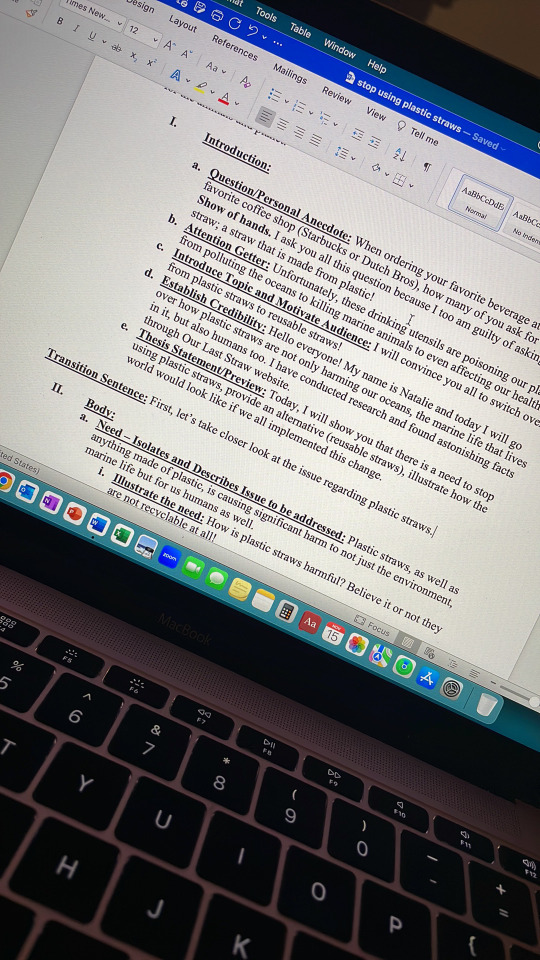

11.15.2022
Revising my Call-To-Action speech outline before I submit it. Then I’ll have to practice my speech for tomorrow, right down my note cards and make my slide show presentation. All this while enjoying some peach herbal tea 🍵
#herbal tea#herbal#tea#practice#speech#communications#public speaking#hot tea#warm blankets#speech outline#note cards#presentation#revision#plasticfree#reusable straws#save the planet#save the turtles#studyblr#study space#call to action#ecofriendly#stress#anxiety#homework#do my assignment#school assignment#college student#winter
5 notes
·
View notes
Photo

A participant in the Global Climate Strike on the steps of the Capitol. . . . . . . . . . Journal Star file photo #saveearth #nature #gogreen #ecofriendly #environment #savetheplanet #earth #climatechange #savewater #zerowaste #savenature #globalwarming #munink #green #saveenvironment #recycle #plasticfree #love #sustainability #savetrees #follow #eco #photography #ramahlingkungan #airpollution #like #water #noplastic #fyp #save https://www.instagram.com/p/CpJmAHpjIJ2/?igshid=NGJjMDIxMWI=
#saveearth#nature#gogreen#ecofriendly#environment#savetheplanet#earth#climatechange#savewater#zerowaste#savenature#globalwarming#munink#green#saveenvironment#recycle#plasticfree#love#sustainability#savetrees#follow#eco#photography#ramahlingkungan#airpollution#like#water#noplastic#fyp#save
2 notes
·
View notes
Photo
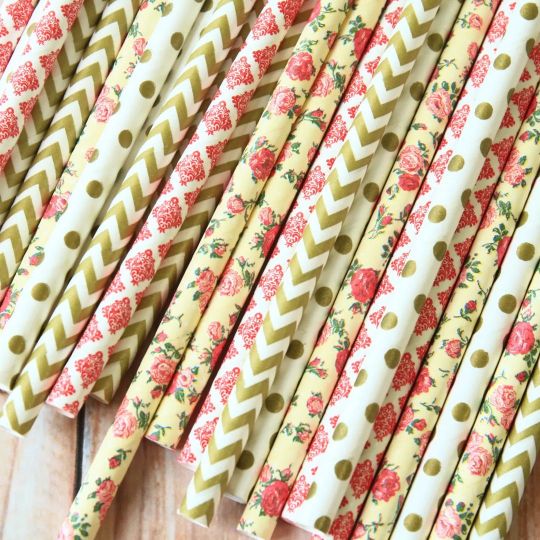
Sunrise Bouquet. lemoncatshop.com/product-page/s… #wedding #birthdayparty #weddingdecoration #birthdaycelebration #party #partyideas #partydecorations #partyinspiration #partyplanner #straws #paperstraws #pretty #damask #dots #floral #chevron #ecofriendly #noplastic #plasticfree www.lemoncatshop.com https://www.instagram.com/p/CpBEtcNoQ0o/?igshid=NGJjMDIxMWI=
#wedding#birthdayparty#weddingdecoration#birthdaycelebration#party#partyideas#partydecorations#partyinspiration#partyplanner#straws#paperstraws#pretty#damask#dots#floral#chevron#ecofriendly#noplastic#plasticfree
6 notes
·
View notes
Text
How FlushTrash reduces plastic waste ?
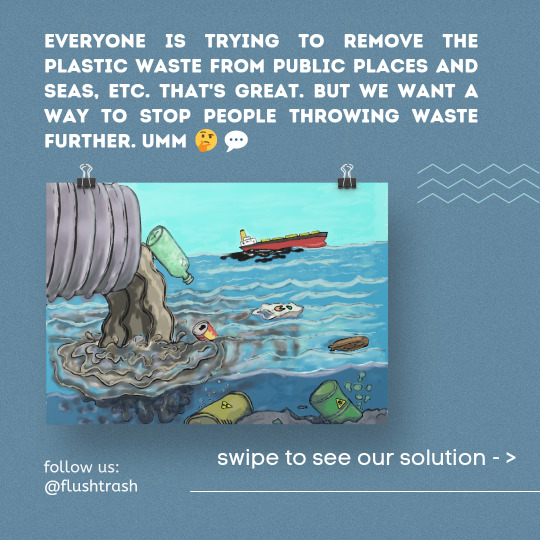
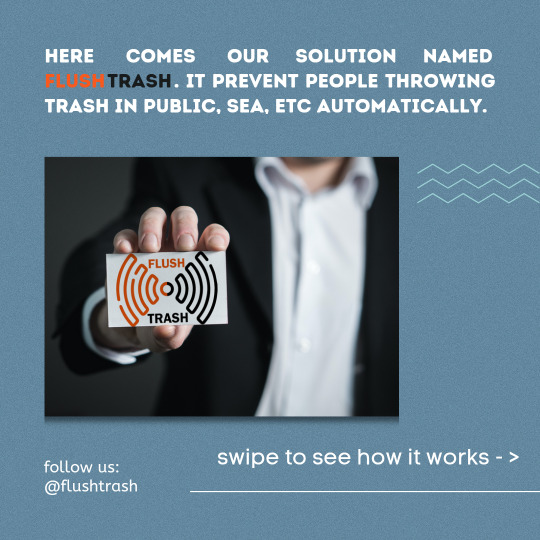


Share and Repost this to support us!
#noplastic#plasticwaste#plasticpollution#plasticfree#zerowaste#savetheplanet#plastic#nature#environment#climate change#ecofriendly#recycling#polution#sustainable#sustainability#flushtrash#mrbeast#teamseas#elon musk
2 notes
·
View notes
Text
Donate to Climate Change
Many nonprofits working to combat climate change are not at liberty to say who their benefactors are. This is because the majority of high-profile donors for this cause prefer to remain anonymous.

Charities and Nonprofits that work on climate change often do not reveal their donors for a number of reasons. These are primarily either that the donor prefers anonymity or because they have been pressured to hide the names by a non-climate change organization, or sponsor.
Nonprofits all over the world have been struggling with maintaining funding in light of falling public interest in climate change issues and many have had to lay off staff members as a result.
—Climate change charity is the act of donating to a non-governmental organization that is working to help people, animals and the Earth as a whole adapt to climate change or mitigate its effects. Some climate change charities aim to educate people about the risks of climate change and what they can do about it.
Some organizations focus on one particular area that is impacted by climate change; for example, Greenpeace focuses on lobbying and activism work, while the Union of Concerned Scientists focuses on science communication around the topic. Organizations like these have been pivotal in bringing attention to what is happening in relation to climate change.
Educational groups tend to focus on educating their communities about how they can reduce their own footprint and make changes in their lives so that they are contributing less towards global warming
In order for there to be a future with a livable planet, we need more people who are willing to take action by donating money and/or taking lifestyle changes.
—The world is dealing with a drastic climate change that threatens our planet and the lives of many. Knowing how to help should be a vested interest for everyone.
There are many nonprofit organizations that aim to protect the environment, but there are also those who focus on climate change specifically. The money donated to any given organization is then directed towards causes that relate to one's own interests within this topic.
In addition, there are also efforts by individuals and charities alike to help those in need who have been affected by the changing climate in their own communities around the world.
Climate Change Donation
Watch video: https://youtu.be/VKaD1rjmEmk
#climate change#climatechange#environment#sustainability#nature#globalwarming#savetheplanet#climate#climatecrisis#ecofriendly#climateaction#zerowaste#sustainable#earth#gogreen#climatechangeisreal#plasticfree#green#sustainableliving#climateemergency#recycle#eco#pollution#fridaysforfuture#climatejustice#climatestrike#covid#vegan#renewableenergy#water
2 notes
·
View notes